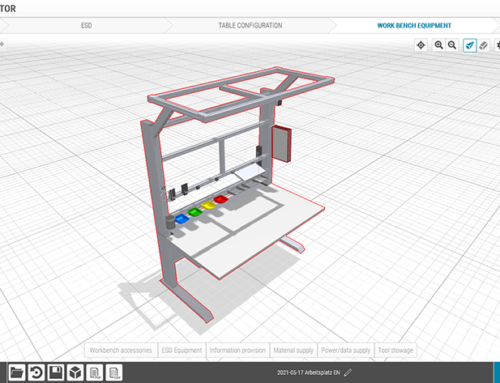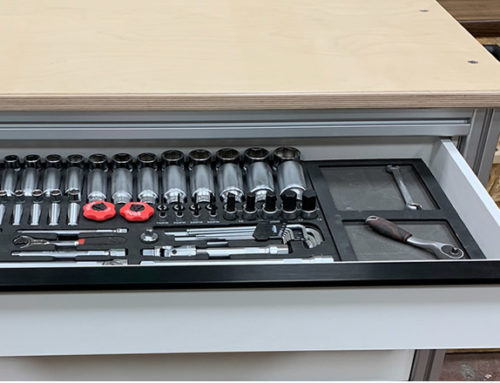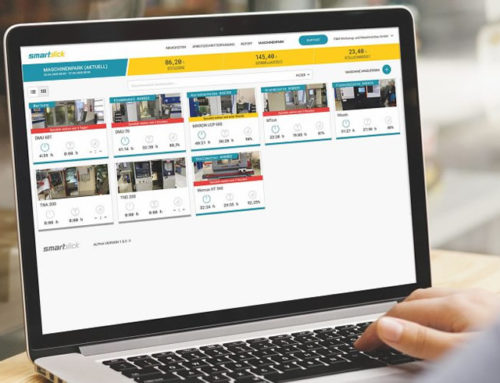Successfully applying the error prevention principle known as Poka-Yoke can significantly boost efficiency in production.
As the 7 Muda concept in particular makes clear, avoiding errors is one of the key ideas behind lean production. At the same time, the lean philosophy states that we can never achieve absolute perfection. No matter whether it’s down to a lack of materials, human error or unanticipated coincidences, you can never be in complete control. What’s special about lean production methods, however, is that they put a positive spin on this fact, with the explicit aim of making processes ever better. In other words, they are about achieving continuous improvement. Poka-Yoke is no different, offering techniques for preventing inadvertent and accidental mistakes (“poka” stands for carelessness/unfortunate errors and “yoke” means “prevention”). If you know what’s causing an error, you can take preventative action using technical fixtures, coloured markings or checklists. But besides optimising existing procedures, Poka-Yoke can also be used to improve new processes at the early planning stage.
What is Poka-Yoke and what examples are there?
Shigeo Shingō (1909-1990) is a co-founder of the Toyota Production System and mostly known as the man who invented Poka-Yoke. It was Shingō’s experiences in statistical quality control that first gave him the inspiration for Poka-Yoke. He was becoming increasingly frustrated that although quality checks can detect errors, the causes of those errors lie in the production process. “Quality is not checked, it is produced” is a quote from Shingō that continues to influence quality management even today. What’s more, the longer it takes to discover such mistakes, the more it costs to correct them. Besides, checking the results of work doesn’t add any value, it simply costs time and money – even when no mistakes can be identified. Poka-Yoke therefore sets out to reveal what is causing the mistakes as soon as possible, using this as a basis for implementing specific countermeasures.
A complaint raised by one of Toyota’s factory managers in the early 1960s provides a good example of this approach in action. When assembling a switch, the factory workers often failed to insert one of its two springs. Merely reminding them about their mistake clearly wasn’t enough. Shingō came up with a solution that was as simple as it was effective, organizing for a spring holder to be built into each and every assembly workstation. Before the employees could set to work, they would hang the two springs onto the holder, meaning that if they thought they were done assembling a switch, they would only have to look at the holder to check whether they had forgotten anything. It might sound trivial, but it highlights a decisive aspect of manual work – carelessness can easily set in when carrying out the same task over and over. That’s why Poka-Yoke aims to reveal the causes of errors and establish appropriate standard processes.
Poka-Yoke – examples and approaches
There are lots of reasons why errors occur in the production process. For example, employees might inadvertently miss out or mix up work steps because their concentration levels are dropping. There’s a particularly good chance of this happening when carrying out repetitive, monotonous tasks. Unclear working instructions or notice boards might lead to misunderstandings, too. Originally, Shingō called his concept “Baka-Yoke”, which translates into English as “idiot-proofing”, but he decided to change it as, rather understandably, employees weren’t overly keen on the name. Shingō’s first choice wouldn’t have adequately reflected his intentions, either. Rather than going over employees’ heads to make decisions or telling them off, the idea behind Poka-Yoke, much like with lean production in general, is that any measures taken should ensure employees can carry out their work as efficiently and successfully as possible. Getting employees involved in resolving problems is an important aspect of Poke-Yoke, too.
This is particularly important when analysing the cause of an error, which is where the Poka-Yoke principle says you should always start when looking at a situation in retrospect. Once that’s done, you should consider the following potential solution mechanisms first and foremost – detection, initiation, regulation. Detection mechanisms include sensors that ensure aspects such as temperature, pressure or colour are correct. Initiation mechanisms can be split into three different categories:
- The contact method: Sensors can also be used for this method to ensure, among other things, that the next work step can only be carried out once all components have been installed.
- The fixed-value method: At the end of a work step, employees rigorously check whether they have actually done the necessary number of tasks.
- The motion-step method: This method involves checking the standard sequences of movements in a process.
Finally, there are two options for regulation mechanisms. On the one hand, there is the intervention method (the process is automatically stopped in the event of an irregularity) and, on the other, there is the alarm method (acoustic or visual signals draw attention to the error). Ideally, the right mechanism is taken into account when a new process is being planned, i.e. before it is implemented, as only then can Poka-Yoke realise its full potential.
Hard and soft Poka-Yoke
Something else you should be aware of is the distinction between hard Poka-Yoke (measures that avoid mistakes) and soft Poka-Yoke (measures that point out a potential error). Cash machines are a clear-cut example of hard Poka-Yoke. You can only take your money once you’ve removed your card from the machine, which cleverly prevents you from walking off without it. There’s a chance you might forget about your card if you were able to take the cash first. An example of soft Poka-Yoke is the thermal spot you might find on a frying pan. Once the pan has reached the right temperature, the spot turns completely red and the pattern you could clearly see before disappears. This helps users to avoid most of the mistakes people make when frying foods. Nonetheless, errors are not ruled out completely since the pan can still get too hot or be too cold, which clearly shows that this is an example of a soft Poka-Yoke.
Are you interested in fascinating reports and innovations from the world of lean production?
Then we have just what you’re looking for! Simply subscribe to the item blog by completing the box at the top right!










